I’m trying to create some animation ( boy who runs whenever key is pressed) using JPanel and painComponent. So, first of all I declare some images, Image array and some methods for drawing. I created timer and added it to constructor.
Image img1;
Image img2;
Image img3;
Image img4;
int index = 0;
Image currentImage l;
Image[] images = new Image[4]
public class Animation extends JPanel implements ActionListener
{
public Animation()
{
loadImages();
getTimer();
imgAdder();
addFirstImage();
}
public void serCurrentImage(Image currentImage)
{
this.currentImage = currentImage;
}
public void getTimer()
{
Timer timer = new Timer(20,this)
timer.start();
}
public void imgAdder()
{
images[1] = img1;
...
}
public void addFirstImage()
{
currentImage = img1;
}
private void loadImages()
{
try
{
BufferedImage img = ImageIO.read(getClass.getResource(“/resources/images/img1.png”);
img1 = img;
// and so on for every image
}catch(IOexception ioe )
ioe.printStackTrace();
}
}
public void paintComponent (Graphics g)
{
super.paintComponent(g);
g.drewImage(currentImage,0,0,this);
requestsFocus();
}
public class FieldKeyListener extends KeyAdapter
{
public void move()
{
setCurrentImage(image[index]);
index++;
if( index == 4 )
index = 0;
}
public void keyPressed(KeyEvent e)
{
super.keyPressed(e);
int key = e.getKeyCode();
if(key == Key.Event.VK_LEFT)
move();
}
}
}
Then drew all images through paintComponent using loop for my array. Also I declared class which extends KeyAdapter. Everything seems to be fine and my animation works, but problem is that it works not as smoothly as I wanted. When I press and hold key, images are changing too fast and process look unnatural. I want , for instance , 3 or 4 images change per second instead of 20. May I added timer in wrong method ? May be there is something like time delay. I don’t know how exactly it works , and which listener should I mention as argument in timer. P.s. I’m just beginner and my code may look incorrectly in terms of coding standards. Also I wrote just crucial parts of my project which represent problem. I hope you help me with this. Thanks in advance.


